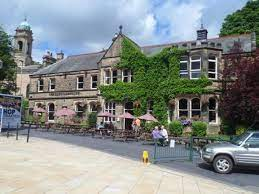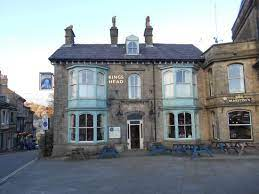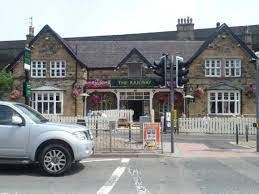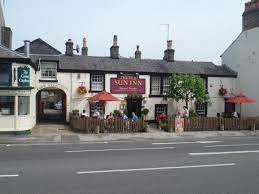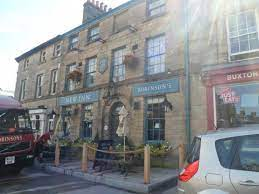Bristol is England's sixth and the United Kingdom's eighth most populous city, one of the Core Cities Group and the most populous city in South West England.
Historically in Gloucestershire, the city received a Royal charter in 1155 and was granted County status in 1373. From the 13th century, for half a millennium, it ranked amongst the top three English cities after London, alongside York and Norwich, on the basis of tax receipts, until the rapid rise of Liverpool, Birmingham and Manchester during the Industrial Revolution in the latter part of the 18th century. It borders the counties of Somerset and Gloucestershire, and is also located near the historic cities of Bath to the south east and Gloucester to the north. The city is built around the River Avon, and it also has a short coastline on the Severn Estuary, which flows into the Bristol Channel.
Bristol is the largest centre of culture, employment and education in the region. Its prosperity has been linked with the sea since its earliest days. The commercial Port of Bristol was originally in the city centre before being moved to the Severn Estuary at Avonmouth; Royal Portbury Dock is on the western edge of the city boundary. In more recent years the economy has depended on the creative media, electronics and aerospace industries, and the city centre docks have been regenerated as a centre of heritage and culture. There are 34 other populated places named Bristol, most in the United States, but also in Peru, Canada, Jamaica, Barbados, and Costa Rica, all presumably commemorating the original. People from Bristol are termed Bristolians.
Archaeological finds believed to be 60,000 years old, discovered at Shirehampton and St Annes, provide "evidence of human activity" in the Bristol area from the Palaeolithic era. Iron Age hill forts near the city are at Leigh Woods and Clifton Down on the side of the Avon Gorge, and on Kingsweston Hill, near Henbury. During the Roman era there was a settlement, Abona, at what is now Sea Mills, connected to Bath by a Roman road, and another at the present-day Inns Court. There were also isolated Roman villas and small Roman forts and settlements throughout the area.
The town of Brycgstow (Old English, "the place at the bridge") appears to have been founded in c.1000 and by c.1020 was an important enough trading centre to possess its own mint, producing silver pennies bearing the town's name. By 1067 the town was clearly a well fortified burh that proved capable of resisting an invasion force sent from Ireland by Harold's sons. Under Norman rule the town acquired one of the strongest castles in southern England.
The area around the original junction of the River Frome with the River Avon, adjacent to the original Bristol Bridge and just outside the town walls, was where the port began to develop in the 11th century. By the 12th century Bristol was an important port, handling much of England's trade with Ireland, including slaves. In 1247 a new stone bridge was built, which was replaced by the current Bristol Bridge in the 1760s, and the town was extended to incorporate neighbouring suburbs, becoming in 1373 a county in its own right. During this period Bristol also became a centre of shipbuilding and manufacturing. By the 14th century Bristol was one of England's three largest medieval towns after London, along with York and Norwich, and it has been suggested that between a third and half of the population were lost during the Black Death of 1348–49. The plague resulted in a prolonged pause in the growth of Bristol's population, with numbers remaining at 10,000–12,000 through most of the 15th and 16th centuries.
The Diocese of Bristol was founded in 1542, with the former Abbey of St. Augustine, founded by Robert Fitzharding in 1140, becoming Bristol Cathedral. Traditionally this is equivalent to the town being granted city status. During the English Civil War the city was occupied by Royalist military, and they built the Royal Fort House on the site of an earlier Parliamentarian stronghold.
Renewed growth came with the 17th century rise of England's American colonies and the rapid 18th century expansion of England's part in the Atlantic trade in Africans taken for slavery in the Americas. Bristol, along with Liverpool, became a centre for the Triangular trade. In the first stage of this trade manufactured goods were taken to West Africa and exchanged for Africans who were then, in the second stage or middle passage, transported across the Atlantic in brutal conditions. The third leg of the triangle brought plantation goods such as sugar, tobacco, rum, rice and cotton and also a small number of slaves who were sold to the aristocracy as house servants, some eventually buying their freedom. During the height of the slave trade, from 1700 to 1807, more than 2,000 slaving ships were fitted out at Bristol, carrying a (conservatively) estimated half a million people from Africa to the Americas and slavery.
The Seven Stars public house, where abolitionist Thomas Clarkson collected information on the slave trade, still exists.
Fishermen from Bristol had fished the Grand Banks of Newfoundland since the 15th century and began settling Newfoundland permanently in larger numbers in the 17th century establishing colonies at Bristol's Hope and Cuper's Cove. Bristol's strong nautical ties meant that maritime safety was an important issue in the city. During the 19th century Samuel Plimsoll, "the sailor's friend", campaigned to make the seas safer; he was shocked by the overloaded cargoes, and successfully fought for a compulsory load line on ships.
Competition from Liverpool from c. 1760, the disruption of maritime commerce caused by wars with France (1793) and the abolition of the slave trade (1807) contributed to the city's failure to keep pace with the newer manufacturing centres of the North of England and the West Midlands. The passage up the heavily tidal Avon Gorge, which had made the port highly secure during the Middle Ages, had become a liability which the construction of a new "Floating Harbour" (designed by William Jessop) in 1804–9 failed to overcome, as the great cost of the scheme led to excessive harbour dues. Nevertheless, Bristol's population (66,000 in 1801) quintupled during the 19th century, supported by new industries and growing commerce. It was particularly associated with the noted Victorian engineer, Isambard Kingdom Brunel, who designed the Great Western Railway between Bristol and London Paddington, two pioneering Bristol-built ocean going steamships, the SS Great Britain and SS Great Western, and the Clifton Suspension Bridge. John Wesley founded the very first Methodist Chapel, called the New Room, in Bristol in 1739. Riots occurred in 1793 and 1831, the first beginning as a protest at renewal of an act levying tolls on Bristol Bridge, and the latter after the rejection of the second Reform Bill.
By 1901, some 330,000 people were living in Bristol and the city would grow steadily as the 20th century progressed. The city's docklands were enhanced in the early 1900s with the opening of Royal Edward Dock. Another new dock – Royal Portbury Dock – was opened in the 1970s.
Its education system received a major boost in 1909 with the formation of the University of Bristol though it really took off in 1925 when its main building was opened. A polytechnic was opened in 1969 to give the city a second higher education institute, which would become the University of the West of England in 1992. With the advent of air travel, aircraft manufacturers set up base at new factories in the city during the first half of the 20th century.
Bristol suffered badly from Luftwaffe air raids in World War II, claiming some 1,300 lives of people living and working in the city, with nearly 100,000 buildings being damaged, at least 3,000 of them beyond repair. The original central shopping area, near the bridge and castle, is now a park containing two bombed out churches and some fragments of the castle. A third bombed church nearby, St Nicholas, has been restored and has been made into a museum which houses a triptych by William Hogarth, painted for the high altar of St Mary Redcliffe in 1756. The museum also contains statues moved from Arno's Court Triumphal Arch, of King Edward I and King Edward III taken from Lawfords' Gate of the city walls when they were demolished around 1760, and 13th century figures from Bristol's Newgate representing Robert, the builder of Bristol Castle, and Geoffrey de Montbray, Bishop of Coutances, builder of the fortified walls of the city.
The rebuilding of Bristol city centre was characterised by 1960s & 70's Skyscrapers, Mid-Century Modern architecture, and the improvement of road infrastructure. Since the 1980s another trend has emerged with the closure of some main roads, the restoration of the Georgian era Queen Square and Portland Square, the regeneration of the Broadmead shopping area, and the loss of one of the city centre's tallest Mid-Century Modern towers.
Bristol's road infrastructure was altered dramatically in the 1960s and 1970s with the development of the M4 and M5 motorways, which meet at an interchange just north of the city and give the city direct motorway links with London (M4 eastbound), Cardiff (M4 westbound across the Estuary of the River Severn), Exeter (M5 southbound) and Birmingham (M5 northbound).
The removal of the docks to Avonmouth Docks and Royal Portbury Dock, 7 miles (11.3 km) downstream from the city centre during the 20th century has also allowed redevelopment of the old central dock area (the "Floating Harbour") in recent decades, although at one time the continued existence of the docks was in jeopardy as it was viewed as a derelict industrial site rather than an asset. However the holding, in 1996, of the first International Festival of the Sea in and around the docks, affirmed the dockside area in its new leisure role as a key feature of the city.
As can be seen, Bristol is a city with a long and varied history and I was very excited for the chance to explore a place that I'd never visited. After an easy but very blustery drive from Long Eaton, I arrived at Matt and Jess' flat in the suburb of Hanham and the day began. After lunch and cocktails (you read that right) at Turtle Bay, we began our journey around the city centre with Matt as a very useful guide. Our first location was The Crown, a very old traditional pub situated on All Saints Lane at the heart of St. Nicholas Market.
The building is Grade II listed and dates from at least 1741. The traditional appearance continues inside with a split level layout and low-beamed ceilings. There is lots of seating in the form of comfy sofas, low and high tables and wall-mounted shelves for those that prefer to lean. The walls are decorated with old photos of the surrounding area and the curved bar is located to one side of the main room. There are 4 handpulls on offer and these include Crown & Glory, Green Duck Duck Turpin, Stunner and High Voltage from Bragdy Heavy Industry Brewery. I went for the High Voltage (4.5%), which is golden in colour, with fruit on the nose and a very hoppy flavour with zest underneath and a smooth finish. It was certainly a good start to the day and the pub surroundings were very nice too with a distinct alternative atmosphere and a very intense man in camouflage trousers who may have been on the angriest date ever. The Crown regularly hosts gigs in the old cellar and this area of the building is allegedly haunted by the apparition of a 17th century gentleman in a Periwig who only appears to women.
We didn't have a set plan for the day so it was very much a case of wandering around until we saw some places we liked the look of. This did not take long at all, as our walk brought us to the Bristol BrewDog!
This glass fronted building is on a smaller and busier scale than it's Nottingham equivalent and it is very busy for a Saturday afternoon, no doubt helped by a live performance from a very impressive acoustic duo. We decided that popping in for a half wouldn't do any harm (famous last words) so we eased our way to the bar. Jess went for Punk IPA, Matt went for a guest cider called Bifrost and I worked my way through a half of 5am Saint, whilst enjoying the entertainment.
We decided that our next destination would The Old Fish Market, a Fuller's operated premises almost opposite.
As its name suggests, this was formally a fish market and now operates as a pub that also houses a Thai restaurant. The building is large, long and made of old brick. Inside there is lots of seating and separate areas divided by internal walls. One wall is covered by a large mural. The bar is located against the wall directly facing the entrance. The 10 available hand pulls are doubles of Chiswick Bitter, London Pride, ESB, Front Row (a 6 Nations special edition) and Butcombe Bitter. Matt opted for the Front Row which I think he soon regretted and Jess decided on a half of Frontier craft lager. I decided that ESB was as good a call as any and it was very well kept, which is what you'd expect for a pub in the Good Beer Guide. We managed to find a small vacant booth awayfrom the main area. The reason for it being empty soon became clear as it smelled strongly of damp and mould was apparent inside some nearby picture frames. We soon worked out that we were in close proximity to the toilets which explained the smell, even if it didn't quite explain the damp. This was a down side to an otherwise very nice place.
For our next destination, we turned back on ourselves slightly and headed for a pub that Matt recommended, The Mother's Ruin.
This is a very alternative pub with a distinct grungy feel which I thoroughly liked. It reminded me of a very similar place in Cambridge. The layout is split level, with stairs leading up to the bar and a further level above that includes comfy sofas and is more open plan. The 2 hand pulls present here offered a choice of either Doom Bar or Old Rosie. Not wishing to go blind this early in the evening, I felt that Doom Bar was a wiser option. It was very nice too which is always a plus. After a few minutes lounging about on the sofas, we finished our drinks and decided what we would do next. Matt did then then realise that he meant to take us to the Irish bar next door instead of to Mother's Ruin but I was having a good time so I wasn't that fussed.
Our next experience certainly belongs in the category designated 'Seemed like a good idea at the time'. Matt had been talking about the Bavarian Beerhouse, an authentic German bierkeller in the heart of the Bristol and we were all determined to check it out.
On the way, I popped into a shop for a pasty which I ate outside the beer house before we went in. This did not prevent a very good-natured German lady from good-naturedly accosting me before we even went in. She only came out to have a laugh because she was bored but I was 5 seconds away from surrendering. Inside, things did slightly improve. The general appearance was essentially a series of wooden picnic benches with a bar to one side and a small stage to the back of the room. It's strictly table service only so Matt and I both ordered steins of quality German beer. I went for the Erdinger Dunkel which was very dark but very very tasty. I thoroughly enjoyed it, which is just as well considering what happened next. Despite my pasty break, we had decided that we would eat here so we happily perused the food menu, which was essentially various sausages presented in various ways. Jess chose more wisely than Matt and I. Whilst she had a frankfurter with mash, Matt and I had ordered what was essentially 2 white sausages served in a bowl of chive water. The sausages were nice enough but we were very confused. The arrival of Matt's friends Pete, probably the most Bristolian man ever, was very timely in the context of what happened next. The only other people in the venue by now were a group of very drunk guys who may have been on a stag do. They enjoyed the following event much more than we did. A large German man (think a lighter, sober Mickey Rourke), took to the stage in short trousers and pedal pushers and began using an electronic keyboard to perform his own renditions of songs such as 'County Roads', 'Is This The Way to Amarillo' and, as we were leaving 'A Little Respect'. I realise that this isn't ale-related but it needed to be shared, as the image is now seared into the back of my eyelids every time I blink.
To detract from the horror we had just witnessed, we visited the fabled Apple, a bar located on a boat.
This is no ordinary bar, this is a cider bar which, amongst a vast range of real ciders, also offers cider cocktails. I'm not generally a cider drinker but, when in Rome and all that. I went for a pint of Wilkins which is one of Matt's favourites. As ciders go, it wasn't bad and I was able to drink the whole thing which I'm claiming as a small victory. The Apple is certainly worth a visit for any fans of real ciders and, although there isn't much on offer for ale drinkers, it has a fantastic and friendly atmosphere that a lot of places would struggle to replicate. And it's on a boat!
What happened at this point becomes quite hazy I must admit. We ventured back on ourselves again and placed ourselves in an outdoor seating area between 2 pubs, The Old Duke and The Llandogr Trow, a Welsh bar. I'll be honest that I don't remember much about either venue, other than that The Old Duke was hosting a very good swing band and that there was Hobgoblin, which wasn't bad. I don't think we went into the Llandoger Trow but subsequent research has revealed that the pub is haunted by a ghostly sailor with a severely injured leg. A TV crew and psychic that visited the site claimed that as many as 14 entities haunt the premises, one of which may be a young boy.
Bristol is certainly a very interesting place, for its history and its sites alone, and it also has a myriad of great pubs that cater for those with an appetite for good beer. I plan on making a return visit later in the year, during which I will endeavour to place more of a focus on some of the other pubs, including some that appear in the Good Beer Guide. Hopefully, this will allow me to amass even more information on the ale scene in this fabulous city. For now though, I feel that this brief visit is a good start and certainly gives me somewhere to jump off from in future. That's all for now though folks. Keep drinking!







